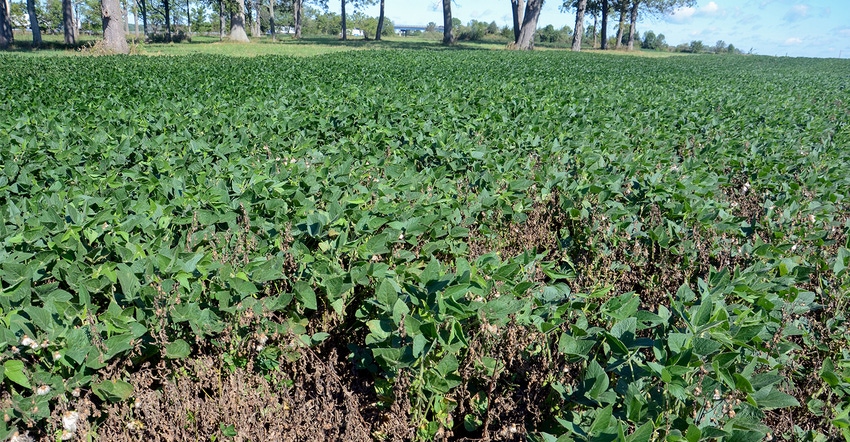September 8, 2017

Fall is officially here, and as the name suggests, temperatures are dropping. As the days cool, the first frosts of the season approach. Fall is a good time to spray herbicides on tough weeds, including Canada thistle. If you understand the various definitions of frost, you may be more likely to spray at a time when plants like thistles are vulnerable to herbicides that can move into their roots and kill the plants.
Frost, in the simplest terms, is dew that happens to be frozen. It forms in much the same way as dew, in that water is deposited out of the air onto the ground. But instead of water droplets, ice crystals are deposited on the ground. Frost usually occurs when temperatures are in the low 30-degree-F range.
Hard frost vs. frost
The “hardness” of the frost is really determined by the air temperature, as opposed to the amount of ice on the ground. A light frost is when temperatures are above 28 degrees. A hard frost is when temperatures fall below 28 degrees. Hard frosts are usually quite damaging to plant life, and sensitive plants should be protected from a hard frost.
Of course, late-maturing corn or soybeans, such as double-crop soybeans, can’t be protected because of the sheer acreage to cover. A hard frost before double-crop soybeans are mature can be quite damaging to both yield and seed quality. A hard frost will cause soybean plants to shut down.
In the case of Canada thistle, however, lighter frosts in the fall signal the plants to begin wending food reserves down into the roots. If you spray herbicides that translocate through plants at this time, the chemical will move down with the food materials headed for the roots. Once in the roots, the herbicides can cause damage or death.
This is why fall is often a better time to work on thistle patches and other perennial weeds than spring or summer. If you hit Canada thistles hard in-season, you may burn off top growth so you can protect and finish the crop, but you may not achieve much actual killing of the perennial weed. It can come back from its roots again later in the season or even next year.
When does frost start?
According to the National Climatic Data Center, the first potential frost (low temperature of 36 degrees or lower) can occur in Indiana anywhere from Sept. 29 to Oct. 13, depending on location.
Dates for the first freeze, defined as 32 degrees, occur in October, from Oct. 3 in Muncie to Oct. 25 in Washington. The first hard freeze of the year, referred to as a hard frost earlier in this article, usually occurs in late October or early November. It can range from as early as Oct. 21 in northwestern Indiana to as late as Nov. 5 in areas of southern Indiana.
Remember that these are average dates based on historical readings. Actual conditions can vary. The fall of 2016 featured very late frosts and hard frosts or freezes, with some not occurring until well into November.
Weed scientists say Canada thistle can be sprayed effectively until a hard frost occurs.
Eggert works in the Indiana State Climate Office. He writes from West Lafayette, Ind. Tom J. Bechman contributed to this story.
About the Author(s)
You May Also Like




